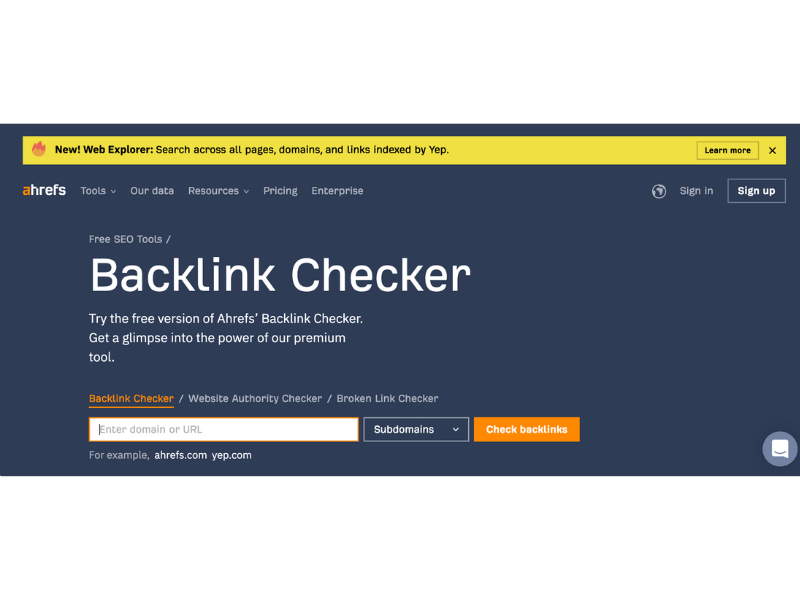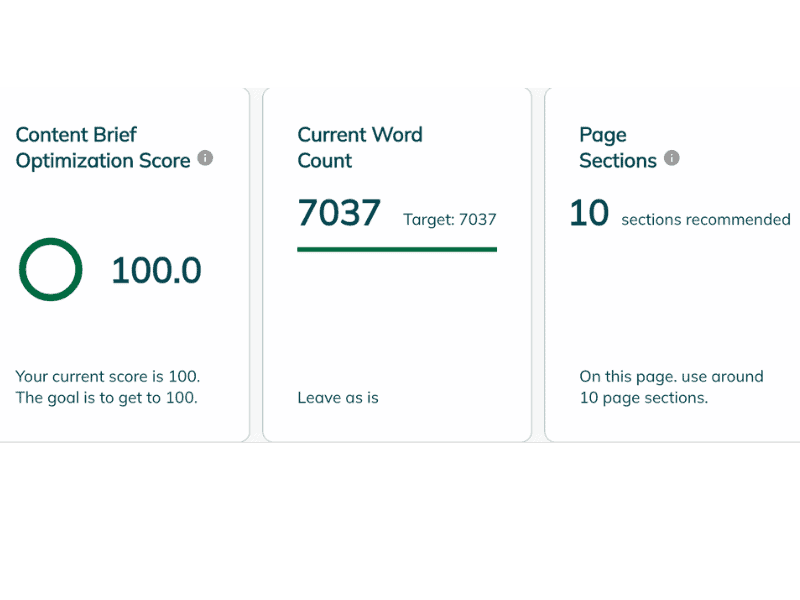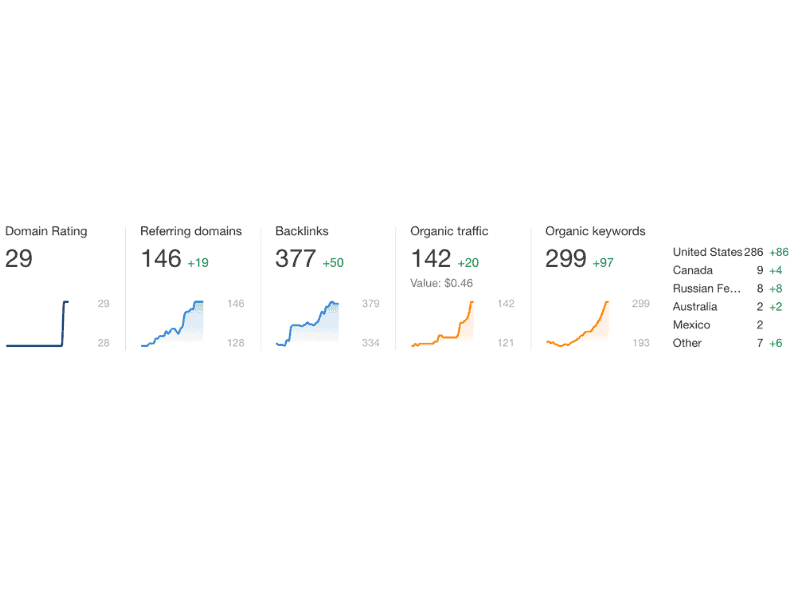In search engine optimization (SEO), backlinks hold immense significance in determining the authority and credibility of a website. Backlinks are links from one website to another, creating connections and validating the content’s value. Search engines like Google consider backlinks crucial indicators of a website’s popularity and trustworthiness. The more high-quality backlinks a website has, the greater its chances of ranking well in search engine results pages (SERPs). Backlinks signals to search engines about valuable content worth ranking and play a pivotal role in driving organic traffic and improving brand visibility. This blog post will explore backlinks, why they matter, and how to leverage them effectively for Google ranking strategies. We will delve into the art of digital content building through backlinks, the impact of backlinks in modern-day SEO and marketing, and the tools available for backlink analysis. Understanding the power of backlinks and implementing strategic approaches can unlock the potential for SEO success, driving organic traffic and establishing a solid online presence in today’s competitive digital landscape
The Role of Backlinks in Boosting SEO Rankings
Backlinks are pivotal in boosting SEO rankings and are considered one of the most important ranking factors for search engines like Google. Here’s a closer look at how backlinks contribute to enhancing SEO performance:
1. Authority and Trust: Search engines view backlinks as a vote of confidence from one website to another. When reputable and authoritative websites link to your content, it signals to search engines that your website is trustworthy and credible. This, in turn, can positively impact your SEO rankings.
2. Increased Visibility: Backlinks help search engines discover and crawl your website more effectively. When other websites link to your content, search engine bots follow those links and navigate to your website, allowing your pages to be indexed and included in search results. The more backlinks you have, the greater your chances of being discovered and ranked by search engines.
3. Referral Traffic: Backlinks contribute to SEO rankings and generate direct referral traffic. When users click on a backlink and are redirected to your website, it increases your website’s visibility and exposes your content to a broader audience. Quality backlinks from relevant sources can drive targeted traffic to your website, potentially leading to increased conversions and engagement.
4. Anchor Text Optimization: Anchor text, the clickable text within a backlink, provides context to search engines about the content on the linked page. Optimizing anchor text with relevant keywords helps search engines understand the topic and relevance of your content, boosting your rankings for those keywords.
5. Diversification and Natural Link Profile: A diverse backlink profile with links from various sources and domains indicates to search engines that different communities value your website and are not solely dependent on one basis for traffic. A natural link profile, consisting of a mix of do-follow and no-follow links, adds credibility and avoids potential penalties from search engines.
6. Social Signals and Brand Exposure: Backlinks generated through social media platforms and other digital channels contribute to social signals, indicating to search engines the popularity and engagement of your content. Social media shares and mentions can lead to increased visibility, brand exposure, and the potential for more backlinks from other sources.
Understanding the crucial role of backlinks in boosting SEO rankings allows businesses and website owners to focus on developing a robust backlink strategy. By acquiring high-quality, relevant backlinks from authoritative sources, optimizing anchor text, and diversifying their link profile, they can strengthen their website’s authority, improve search engine rankings, and drive valuable organic traffic.
Exploring Competitor Backlink Strategies: Revealing the Impact of Internal and External Link Distribution

In the first step, When conducting competitor analysis, one must assess two types of competitors: a realistically unbeatable competitor and a North Star competitor. By examining their backlink data, you can gain valuable insights into the distribution of backlinks pointing to their respective home pages versus internal pages. *Interior pages – encompass components beyond the homepage, such as blog articles, feature pages, or other landing pages on your website. This analysis can be extended to your website and the two competitor websites, allowing you to determine the level of aggressiveness and proactivity in their content promotion. This analysis also enables you to identify whether the competitors are more proactive in obtaining backlinks specifically for these internal pages.
✳️ When doing my competitor analysis, I use a handy backlinks checker from Ahrefs, that’s FREE!
Two primary possibilities exist: the competitors’ proactive content promotion outpaces yours, or your website’s domain rating is lower. Strengthening your backlink profile becomes crucial if the latter is the case. Improving your domain rating, which reflects the strength of your backlinks, is essential for enhancing your site’s ranking potential.
Interior pages – encompass components beyond the homepage, such as blog articles, feature pages, or other landing pages on your website. This analysis allows you to identify whether the competitors are more proactive in obtaining backlinks specifically for these internal pages.
This assessment is the initial stage to identify the primary obstacle hindering your website’s ranking. Is it because the other competitors are more proactive, or is it due to your website’s lower domain rating? Evaluating the strength of your backlinks and domain rating is crucial. If the reason behind your lower ranking is your website’s domain rating, it signifies the need to enhance the strength of your backlink profile.
Enhance Your Website’s Visibility: Strengthening Links for Homepage and Internal Pages with Essential Keywords
Deciding whether to build links to your homepage or specific internal pages is a commonly confused decision point for many people. Building links to internal pages can increase your domain authority just as much as creating links to your homepage but with more focused power. However, let’s explore this topic in more detail and consider how one can decide.
Ultimately, the choice depends on what you see ranking in the search engine results pages (SERPs). If you aim to rank a target page for a specific keyword, such as a blog article, analyzing the top 10 ranking results is crucial. Building backlinks to your homepage becomes the initial step if all the sites outrank you with a higher domain rating.
Focusing on the homepage can be the fastest way to increase the overall domain rating of your site. While building links to internal pages can also enhance domain rating, it may take longer to achieve significant results. The effectiveness of internal linking is crucial in distributing link juice throughout your website, which affects the impact of those internal page links.
On the other hand, if you observe weaker sites ranking higher than you, it might be more beneficial to concentrate on building backlinks to the specific URL you wish to promote.
Another critical factor to consider is your goals. Suppose your objectives revolve around specific business outcomes, such as generating revenue through sign-ups and sales. In that case, it is advisable to prioritize ranking internal pages that can directly contribute to those goals. By doing so, you can achieve a faster return on investment (ROI) by focusing on ranking those particular pages.
The decision between building links to your homepage or specific internal pages depends on the SERP analysis, the current domain rating of your site compared to competitors, the speed at which you aim to increase domain rating, the effectiveness of your internal linking strategy, and the alignment with your business goals. Assessing these factors will help you make an informed decision and devise an effective link-building plan.
Achieving the Optimal Content Quality Threshold for Effective Ranking

Content quality is a crucial factor in determining the success of an article. It encompasses various elements such as search intent, content type, and relevance, all contributing to our definition of high-quality content. When aiming to create a top-notch article that ranks well for a specific keyword, ensuring that it aligns with the search intent and satisfies the target audience’s requirements is vital.
We have observed instances where clients faced challenges in achieving higher rankings due to inadequate content quality. This prompted us to identify a content quality threshold, which signifies the point where every possible optimization technique has been applied to the page. To reach this threshold, we recommend utilizing tools like PageOptimizer Pro to fine-tune the page, optimize internal linking structures, and address homepage elements comprehensively.
Once you have completed around 90% to 100% of the recommended optimizations, it is common to encounter a plateau in rankings. It typically indicates a need for additional backlinks, especially for highly competitive keywords. Although content quality plays a significant role, hitting the content quality threshold will require acquiring more or higher quality backlinks.
Before embarking on a backlink-building campaign, we carefully select target pages for each month. However, ensuring the content has been fully optimized and reaches the highest possible quality before commencing the backlinking process is essential. This step ensures that our clients possess the best content possible, which sets the stage for successful backlink acquisition.
In conclusion, content quality is a fundamental pillar in achieving influential rankings. By understanding the content quality threshold and optimizing the article to its fullest potential, we lay a solid foundation for future backlinking endeavors.
Steer Clear of Link Farms or Private Blog Networks (PBNs) for Effective Backlink Building
Link Farms are websites specifically designed to sell backlinks, often using deceptive tactics to manipulate domain ratings. One effective method to expose these deceitful practices involves publishing abundant, easily rankable content on unrelated topics to acquire backlinks. This strategy artificially inflates the domain rating, creating an illusion of authority. However, a closer examination reveals that these sites are essentially vast collections of unrelated topics, spanning everything from beauty and business to fashion and beyond. Such indiscriminate targeting enables them to achieve higher rankings and inflated domain ratings. Therefore, exercising caution when dealing with such sites is crucial. Fortunately, a simple way to filter them is by assessing page-level metrics. To ensure the authenticity of backlinks, targeting links from relevant pages rather than these dubious link farms is recommended.
Understanding PBNs: Manipulating Links for SEO Gains
Private blog networks (PBNs) are exclusively designed websites created to link to another website and enhance its visibility in organic search results. The concept behind PBNs revolves around the notion that these “feeder” sites will pass link equity to the main site, bolstering its authority and improving its ranking power.
However, using PBNs is considered an attempt to manipulate search engine algorithms. Consequently, Google identifies this practice as a link scheme that violates its webmaster guidelines, categorizing it as a black-hat SEO tactic.
The Inner Workings of PBNs
PBNs give the impression that a website has acquired backlinks from other sites based on merit. Backlinks serve as a significant ranking factor for Google because each link directed to your site acts as a vote of confidence, indicating that people appreciate and trust your content.
By establishing links from other websites within your PBN to your “money” site, you artificially fabricate these votes of confidence, hoping that Google perceives them as genuine and rewards you with higher rankings.
Google continually enhances its algorithms to combat unnatural links. Nevertheless, there is substantial evidence within black-hat SEO communities that PBNs still yield positive results for numerous websites.
Consequently, PBN creators take extensive measures to conceal any potential “footprints” that might connect their network sites to their money sites, preventing Google from uncovering their actions.
Motivations Behind PBN Usage
Constructing PBNs effectively comes with risks, costs, and time requirements. Despite these challenges, there are two primary reasons why people continue to employ this link-building tactic:
1. Difficulties in Link Building
Ideally, everyone would obtain backlinks organically through white-hat techniques such as blogger outreach. Unfortunately, these strategies do not always yield desired outcomes.
Regardless of the effort to create unique, link-worthy content, reliance on other website owners to link back to your content introduces uncertainty.
Even after spending extensive time setting up outreach campaigns and sending numerous emails, failure to secure new backlinks remains possible.
2. Manipulation of Anchor Texts
Another reason for employing PBNs is the ability to control the anchor texts of backlinks. Anchor texts play a crucial role in helping Google understand the context of the linked page, enabling more accurate page rankings for relevant keywords.
Consider ranking a website for the keyword “best protein powder.” Which of the following backlink anchor texts would be most effective?
– “Top protein powder deals.”
– “Click here”
– “Unicorn toys”
Undoubtedly, the first example is the correct choice as it informs Google about the topic of the linked page: protein powder. The second example needs to convey relevant information, while the third is entirely unrelated, likely resulting in Google disregarding the link.
Hence, many SEO professionals seek backlinks with anchor texts rich in keywords, believing this approach can improve their Google rankings for target search terms.
With outreach-based link building, controlling the anchor text is typically impossible as it is at the site owner’s discretion. However, PBNs offer the opportunity to manipulate anchor texts according to preference.
Read about: What are some common SEO mistakes in digital content production?
Leveraging Backlinks for Effective Google Ranking Strategies
Regarding obtaining backlinks, targeting pages with high domain authority and traffic can significantly benefit your website. Such pages rank well for relevant keywords, making them valuable resources endorsed by Google. Additionally, they can generate referral traffic, which is highly desirable. Therefore, assessing the backlink metrics at both the domain and page levels is crucial. Moreover, determining topical relevance is essential.
To gauge topical relevance, you should focus on acquiring backlinks from pages that cover topics related to your own. A helpful tool for this purpose is Majestic SEO, which provides topical trust flow data. By analyzing the top 10 results and identifying the dominant topic across their backlink profiles, you can find similar pages to target. However, anchor text can be challenging to control, especially when conducting outreach to journalists or websites. Guest posts offer more control over anchor text, making them valuable.
Guest posting is an excellent strategy for emerging sites venturing into the marketing world to obtain valuable backlinks. Personally, I have partnered with a highly regarded organization known as Authority Builders, an affiliate I trust implicitly.
Ideally, your backlink distribution should align with specific percentages. For example, to rank for a particular keyword, aiming for a 1% exact match, 10% phrase match, and 5% URL match can be beneficial. Additionally, considering the distribution between no-follow and do-follow links is crucial. Although nofollow links may not directly impact rankings, they can still contribute to building trust signals, which are essential for your website. Observing your competitors’ backlink profiles can help identify the proportion of nofollow links they have, allowing you to consider building some as well.
Building trust through backlinks is vital for any website, especially for tech companies. By incorporating these strategies, you can enhance the trustworthiness of your site and diversify your backlink profile. This approach becomes particularly important if you’re aggressively acquiring backlinks rapidly. Therefore, balancing your backlink portfolio with a mix of no-follow and do-follow links is recommended.
In addition to creating link-worthy content, proactive outreach efforts can significantly contribute to your backlink acquisition. Engaging in targeted outreach to relevant websites and offering your content as a valuable resource for them to link to can yield fruitful results. This outreach strategy helps you establish connections within your niche and encourages backlinks from trusted sources.
Understanding the significance of backlinks in SEO rankings is crucial for developing effective Google ranking strategies. Backlinks are an important ranking factor, and optimizing their quality through content creation and outreach can significantly enhance your website’s visibility, authority, and organic search traffic.
When implementing a backlink strategy, staying informed about industry trends and utilizing available tools and platforms is essential. Tools like SEMrush and Ahrefs offer comprehensive solutions for backlink analysis, allowing you to gain insights into your backlink profile, identify referring domains, and monitor the effectiveness of your link-building.
Accelerating Link Building Velocity: Finding the Right Pace for Your Website

Regarding link building, the speed at which you construct your links can significantly impact your website’s success. But how crucial is link-building velocity? Can you go too fast? Are there specific speeds that demand caution depending on whether you have a newer or more established website? Let’s delve into the importance of link-building velocity and explore different strategies based on your website’s age.
Attention to link-building velocity is essential for more competitive keywords and terms. Chances are high that your target pages already have many links due to the fierce competition. In these scenarios, speed becomes a critical factor alongside quantity and quality. As you strive to rank for these competitive terms, prioritizing the pace of acquiring relevant links is paramount.
However, if you’re a newer website aiming to establish relevance and authority in your niche, focusing on link quality takes precedence over quantity and speed. Building high-quality links that showcase your site’s credibility and expertise is advisable in the initial stages. A strong foundation of quality links lays the groundwork for future growth and visibility.
Over time, as your website gains authority and competes against more established sites and pages, you will likely need to increase the speed of your link-building efforts while maintaining a focus on quality. This gradual shift allows you to balance the quantity and quality of links, ensuring continued progress and improved rankings.
The velocity at which you build links is vital to your website’s success. For competitive keywords, speed becomes crucial alongside quantity and quality. For newer sites, emphasizing link quality initially helps establish relevance and authority. As your website matures, a higher rate combined with quality becomes necessary to compete effectively in the online landscape. Finding the right pace for your link-building endeavors is a continuous process that aligns with your website’s goals and objectives.
The Art of Digital Content Building through Backlinks
To truly harness the power of backlinks for SEO success, it’s imperative to prioritize quality over quantity. While all backlinks serve a purpose, not all hold the same weight in the eyes of search engines. When evaluating backlinks, search engines scrutinize the linking websites’ relevance, authority, and trustworthiness. High-quality backlinks from reputable and relevant websites carry the most significant SEO impact.
Building backlinks can be approached through a multitude of strategies. One highly effective method revolves around creating valuable content that naturally attracts backlinks. Producing informative, engaging, and share-worthy content increases the likelihood of other websites referencing and linking to your content, expanding your backlink profile. This approach aligns with the principle of providing exceptional value to your target audience, which can lead to organic growth in backlinks.
However, more than relying on the allure of your content may be required. Engaging in outreach efforts can contribute to your backlink acquisition. You can forge connections and secure backlinks from trusted sources by contacting relevant websites within your niche and offering your content as a valuable resource for them to link to. This proactive outreach strategy demonstrates your expertise and willingness to contribute to the broader community, fostering mutually beneficial relationships.
Understanding the significance of backlinks in SEO rankings is pivotal for devising effective digital content-building strategies. Backlinks serve as a crucial ranking factor, and optimizing their quality through content creation and outreach can significantly enhance your website’s visibility, authority, and organic search traffic.
When implementing a backlink strategy, staying informed about industry trends and leveraging available tools and platforms is essential. Leading tools such as SEMrush and Ahrefs offer comprehensive solutions for backlink analysis, enabling you to gain insights into your backlink profile, identify referring domains, and monitor the effectiveness of your link-building efforts.
By building digital content through backlinks, businesses, and website owners can solidify their online presence, elevate their search engine rankings, and drive valuable organic traffic. Remember, it’s not just about acquiring backlinks; it’s about crafting compelling content, nurturing relationships, and building a diverse and high-quality backlink profile that showcases your website’s authority and relevance within your industry.
Read about: What Makes a High-Quality Backlink?
Exploring the Impact of Backlinks in Modern-Day SEO and Marketing
To navigate the complex realm of backlinks, marketers can rely on powerful tools such as SEMrush and Ahrefs. These tools provide valuable insights into backlink analytics, empowering businesses to track and analyze their backlink profiles meticulously. By leveraging these tools, marketers can gain a comprehensive understanding of their referring domains, evaluate the success of their outreach campaigns, and continuously monitor the effectiveness of their backlink-building endeavors.
In essence, backlinks have become indispensable to successful SEO and digital marketing strategies. They testify to a website’s authority, credibility, and popularity within its respective industry. By comprehending the true essence of backlinks, why they matter, and how to harness their potential, businesses can unlock the tremendous power of backlinks and propel their SEO endeavors to new heights. It is crucial to approach backlinks strategically, placing a strong emphasis on quality rather than quantity. By acquiring high-quality backlinks from reputable sources and relevant websites, businesses can drive substantial organic traffic, ascend the ranks of search engine results, and firmly establish their online presence in the face of fierce competition.
When it comes to identifying bad links or link farms, there are several key factors to consider. Here are some tips to help you in this process:
1. Assess Content Quality: One of the primary indicators of a bad link or link farm is the quality of the content. If the content appears poorly written, lacks uniqueness, and seems generic, it’s usually a red flag. Pay attention to the language used and whether the information provided adds value or is repetitive.
2. Analyze Outbound Links: Look closely at the links included within the content. Suppose you notice that the content is linking out to a large number of websites, mainly using exact-match keywords. In that case, it’s likely an indication that the page is involved in selling backlinks. Excessive linking to unrelated or low-quality sites can be a warning sign.
3. Evaluate the Website’s Business Model: Consider the website’s primary business model. Do they offer a product or service? Are they generating revenue through legitimate means? If the website lacks a transparent business model, such as affiliate links, products, or services, it raises suspicions that it might be primarily focused on selling links. Legitimate websites typically have identifiable ways of making money.
4. Verify Authenticity: Determine if real people operate the website or if there’s a genuine company behind it. Look for signs of legitimacy, such as LinkedIn profiles or social media presence. Reputable websites often showcase real individuals associated with their content. On the other hand, link farms tend to be vague about their team and may rely on stock photos or generic descriptions.
5. Avoid Generic Link Farms: Many link farms share common characteristics like generic descriptions, lack of real people, and limited information about their purpose. Genuine websites provide detailed insights into their niche or industry and may have profiles and photographs of real individuals. Stock photos are often a giveaway that the website may not be trustworthy.
Considering these tips and taking a holistic approach to evaluating websites, you can increase your chances of identifying bad links and avoiding link farms. Remember to prioritize quality content, verify the website’s and its operators’ authenticity, and pay attention to suspicious link practices.
Embracing the Power of Backlinks: Revolutionizing SEO, Digital Content, and Marketing
In search engine optimization (SEO), backlinks hold immense significance in determining the authority and credibility of a website. Backlinks are links from one website to another, creating connections and validating the content’s value. Search engines like Google consider backlinks crucial indicators of a website’s popularity and trustworthiness. The more high-quality backlinks a website has, the greater its chances of ranking well in search engine results pages (SERPs). Backlinks signal search engines about valuable content worth ranking and play a pivotal role in driving organic traffic and improving brand visibility. This blog post has explored backlinks, why they matter, and how to leverage them effectively for Google ranking strategies. We delved into the art of digital content building through backlinks, the impact of backlinks in modern-day SEO and marketing, and the tools available for backlink analysis. Understanding the power of backlinks and implementing strategic approaches can unlock the potential for SEO success, driving organic traffic and establishing a solid online presence in today’s competitive digital landscape.


